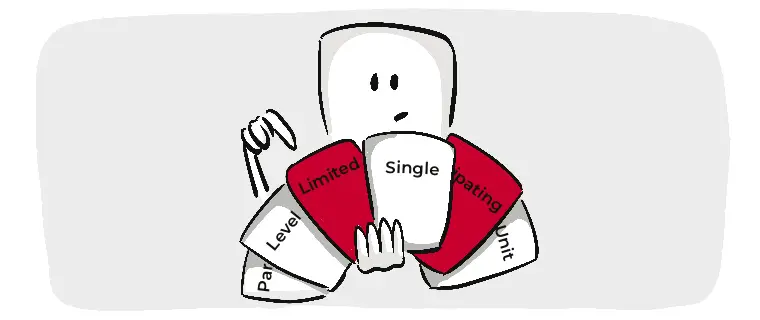When you set out to purchase a whole life insurance policy, you’ll be bombarded with options. There are so many variants of whole life plans available in the market today that it is easy to get confused! Some plans are designed for specific circumstances, some come with different premium payment terms, some offer different savings and investment components, and so on. Hence, before you zero down on an option, it is important to understand how each of these whole life insurance options work.
In this chapter, let us take a look at the different types of whole life insurance policies offered by insurance companies.
Types of Whole Life Insurance Plans
Here’s a list of some common types of whole life insurance policies sold by insurance companies today.
1. Level Payment Whole Life Insurance
Here, you’re required to pay the policy premiums throughout the policy tenure until you’re alive. The premiums of this type of plan are calculated after taking into consideration the policy tenure you opt for, and then this premium amount remains fixed throughout.
If you pass away while the policy is still active, this policy will pay the sum assured to your nominee and in case you survive the policy term, the policy will pay the sum assured to you as a maturity benefit.
2. Limited Payment Whole Life Insurance
Limited payment whole life insurance plans allow you to finish your premium liability in fewer years compared to the policy term you choose. So, instead of continuing to pay premiums until the end of the policy duration, you can choose to pay your premiums in faster and larger instalments and get the premium paying liability off your chest quickly.
For instance, you buy a whole life insurance policy up to the age of 99 years. You can complete your premium payments in say, the next 15-20 years and enjoy the insurance cover for the rest of the duration.
Since this option allows you to make the premium payment term shorter, the premiums of these plans will be higher as compared to other whole life insurance options.
3. Single Payment Whole Life Insurance
Just like the name suggests, this whole life insurance plan allows you to pay the entire premium amount as a single payment in one go and you can enjoy the benefits of the policy until the end.
One major benefit of buying this type of whole life insurance is that since the premium payment is completed in a single go, an immediate cash value is generated under the policy that you can borrow against.
There’s one drawback of investing in this plan too - you will have to pay significant fees if you surrender the policy during the initial few years.
4. Participating Whole Life Insurance
Along with the death and maturity benefits, this type of whole life insurance policy gives you an opportunity to get a share of the profits of the insurance company.
Under this option, the insurance company, apart from the fixed benefits, also shares the profits from the money invested by the insurance company.
The insurance company will periodically declare a certain share that it will pay to every customer.
Please note, that these bonuses and dividends will completely depend on the performance of the insurance company, and there’s no guarantee they’ll be paid every year.
5. Non-Participating Whole Life Insurance
This plan is a plain vanilla plan, the exact opposite of the participating whole life insurance plan. Here, you would be offered a fixed payout on maturity or death of the insured member. Customers don’t get any bonuses or dividends and the profits that an insurance company makes in a year are not shared with you.
A non-participating whole life insurance policy only provides death and a maturity benefit, i.e., if you pass away during the policy term, your nominee will receive a fixed sum of money and in case you survive the policy tenure, you’ll get a maturity payout.
6. Unit Linked Whole Life Insuranc
Also known as ULIPs, these plans allow you to seek a dual benefit of both insurance and investment. The premium of these policies is divided into two parts. One part of the premium goes into offering you a life cover for your entire life, and the other part of the premium is invested in different funds in the stock market. You can opt for this plan if you have a higher risk appetite & can afford to stay invested for the long term without worrying about short-term market volatility.
Now that you’re aware of the various types of whole life insurance policies available in the market, we’re sure you can go ahead and decide which type of plan will be right for you.





